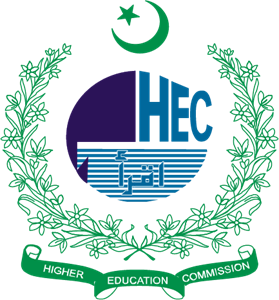A Comparative Analysis of Reconstruction Strategies Employed in Major Earthquakes of Indo-Pak Region
Abstract
 Abstract Views: 251
Abstract Views: 251
Housing is one of the most important needs of mankind to survive. A secure and properly planned house, gives comfort to people using it, keeping them secure from severe environment, un-wanted people and animals. Apart from the human casualties, the other striking and usually most visible effect of natural disaster is majorly the destruction of houses. The loss of houses has a devastating effect on privacy, livelihoods and the dignity of individuals. An effective program for the reconstruction of houses for those affected is critical to ensure restoration of the society’s economy, cultural identity and dignity. For many humanitarian organizations, employing professional construction companies is the most common and quickest way of rebuilding houses in the aftermath of a disaster. However every strategy has its own risks and limitations, but there is a growing awareness being shared among countries to mitigate these situations. This study carefully examines the reconstruction strategies employed in earthquake affected buildings of Kashmir, Pakistan and Gujrat, India. The analysis concludes proper fulfillment of the byelaws for seismic resistant construction and enforcing law of training for laborers and local people in redevelopment of earthquake hit area.
Downloads
References
Barenstein, J. D. (2006). Housing reconstruction in post-earthquake Gujarat: A comparative analysis. Retrieved from https://odihpn.org/resources/housing-reconstruction-in-post-earthquake-gujarat-a-comparative-analysis/
Charlesworth, E., & Ahmad, I. (2005). Sustainable housing reconstruction: Designing resilient housing after natural disasters. Routledge.
Cliffe, S., Guggenheim, S., & Kostner M. (2003). Community-driven reconstruction as an instrument in war to peace transition. World Bank.
Encyclopedia of Britannica. (n.d.). Bhuj earthquake of 2001. Retrieved 2019, March 5, from https://www.britannica.com/event/Bhuj-earthquake-of-2001
ERRA. (2006). Strategy document rural housing reconstruction. Author.
ERRA. (2007). Principles, themes and lessons learnt. Author.
ERRA. (2009). Urban Housing Development Strategy. Author.
ERRA. (2014). Pakistan Earthquake 2005: The case of centralized recovery planning and decentralized implementation. Author.
ERRA. (n.d.). Earthquack Rehabilitation and Reconsturction Authority. Retrieved 2019, March 14, from http://www.erra.gov.pk/
Global Shelter Cluster. (2015). Owner-driven housing reconstruction guidelines – IFRC. Baraza.
Javed, M., Khan, A., Penna, A., & Guido, M. (2006). Behaviour of masonry structures during the Kashmir 2005 earthquake. Paper presented at the First European Conference on Earthquake Engineering and Seismology (1st ECEES), Geneva, Switzerland.
Kazmi, Z. A. (2013). Contribution of internal deformations of earth's crust in triggering earthquake induced disasters. Bulletin of ERS, 46, 43-52.
Mumtaz, H., Mughal, H., Stephenson, M., & Bothara, J. (2008). The challenges of reconstruction after the October 2005 Kashmir Earthquake. Retrieved from https://www.nzsee.org.nz/db/2008/Handbook.htm
Sharmaa, K. (2018). Challenges for reconstruction after Mw7.8 Gorkhaearthquake: A study on a devastated area of Nepal. Geomatics, Natural Hazards and Risk, 9(1), 760-790.
UN Refugee Agency. (2011). Emergency handbook. Retrieved 2019, Feburary 18, from https://emergency.unhcr.org/entry/242872/cash-based-interventions-cbis
UNDP. (2009). From relief to recovery: The Gujarat experience. Author.
UN-HABITAT. (2010). Technical and training support for the earthquake reconstruction and rehabilitation authority. Retrieved 2019, February 4, from http://www.fukuoka.unhabitat.org/projects/pakistan/detail04_en.html
World Bank. (2010). Reconstruction tasks and how to undertake them. Author.
Yadav, R., Shanker, D., Chopra, S., & Singh, A. (2010). An application of regional time and magnitude predictable model for long-term earthquake prediction in the vicinity of October 8, 2005 Kashmir Himalaya earthquake. Natural Hazards: Journal of the International Society for the Prevention and Mitigation of Natural Hazards, 54(3), 985-1014.

Copyright (c) 2019 Sarmad Salahuddin, Beenish Mujahid, Farah Jamil, Nasir Javed

This work is licensed under a Creative Commons Attribution 4.0 International License.
JAABE follows an open-access publishing policy and full text of all published articles is available free, immediately upon publication of an issue. The journal’s contents are published and distributed under the terms of the Creative Commons Attribution 4.0 International (CC-BY 4.0) license. Thus, the work submitted to the journal implies that it is original, unpublished work of the authors (neither published previously nor accepted/under consideration for publication elsewhere). On acceptance of a manuscript for publication, a corresponding author on the behalf of all co-authors of the manuscript will sign and submit a completed Copyright and Author Consent Form.
Copyright (c) The Authors





